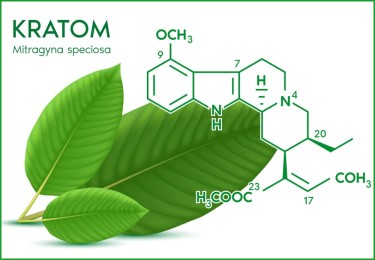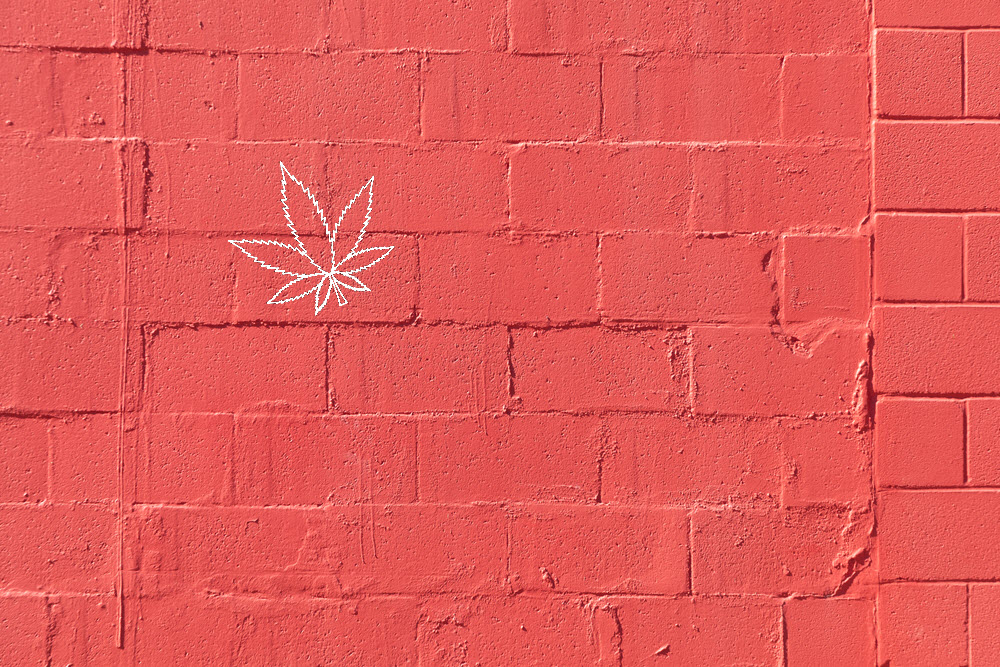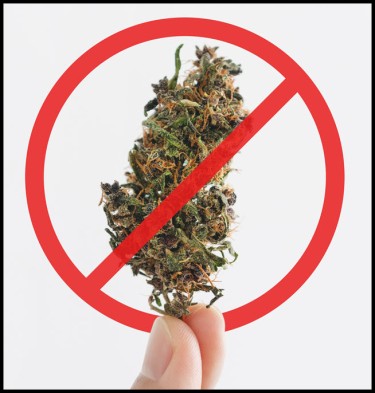Cannabis News
Is Kratom Addictive? Understanding Dependence, Risks, and Safe Usage
Published
1 week agoon
By
admin

Is kratom addictive? Discover the potential for dependence on Kratom, the risks involved with its use, and how to approach its consumption responsibly.
From 2011 to 2017, over 1,800 calls to poison centers involved kratom in the U.S. This significant number highlights the concern regarding kratom addiction.
However, without Food and Drug Administration (FDA) oversight, and due to various consumption methods like teas and capsules, there are significant health risks. Safe use of kratom is now in question due to these issues.
Research debates how dependence develops, outlining signs like loss of control and withdrawal symptoms. These signs are seen in regular kratom users. Ironically, some people switch from drugs like heroin to kratom, looking for a legal alternative.
Understanding Kratom: Origins and Prevalence
Kratom comes from the Mitragyna speciosa tree in Southeast Asia. It can act like a stimulant or like opioids, based on how much you take. People use it in different ways, for a small energy boost or stronger effects at higher doses.
The legal status of kratom in the U.S. is complicated and changing. It’s a hot topic because some worry about its misuse. It’s still legal in several states. This shows how different places handle drug rules. The National Institute on Drug Abuse is looking into its medical benefits. But, the FDA hasn’t approved it for medical use yet. The DEA calls it a “drug of concern,” which means policies might change.
-
From 2011 to 2017, poison control centers in the U.S. got over 1,800 reports about kratom. This shows it’s widely used and might pose health risks.
-
Kratom’s main ingredients bind to opioid receptors very strongly, stronger than morphine even. This fact is key to understanding its effects.
-
As more people use kratom, more are reporting serious health problems. These include liver and heart issues, and tough withdrawal symptoms, particularly in those already sick.
The statistics show mounting worries about kratom in the U.S. As its use grows, it’s becoming more important to health policies and laws. What happens next will depend on further research and legal decisions.
Is Kratom Addictive: Investigating the Substance’s Nature
The question of kratom’s addictiveness focuses on how it affects brain receptors and its long-term health implications. The ongoing debate highlights concerns about dependence and the risk of addiction. Scientists are closely looking at these issues.
How Kratom Works in the Brain
Kratom’s main alkaloids, mitragynine and 7-hydroxymitragynine, bind to the brain’s opioid receptors, similar to painkillers and narcotics. This connection suggests a potential risk of dependence. These alkaloids are key to kratom’s pain relief but also point to possible addiction concerns, especially with frequent, high-dose usage.
Patterns and Consequences of Long-term Use
-
Using kratom often, especially in large doses, can increase the risk of dependence and intense withdrawal symptoms, similar to opioid withdrawal.
-
Although some use it for pain or to improve mood, long-term kratom users might see serious health problems, like liver damage and mental health issues.
-
Withdrawal symptoms, including irritability, nausea, and sleep problems, show kratom’s impact on one’s physical and mental health.
Assessment of Addiction Risks
Studies indicate a significant risk of addiction to kratom, especially with high doses or frequent use. Dependence develops as the body gets used to kratom, leading to tolerance and a need for more to feel its effects. Withdrawal symptoms emphasize this risk, as highlighted by health experts.
Physiological Effects: Kratom’s Impact on the Body
There is a lot of debate about the safety and use of kratom. This herbal extract comes from the Mitragyna speciosa plant. It has drawn attention for its possible harmful effects on the body. The FDA has issued many warnings about kratom, raising safety concerns.
-
Kratom Adverse Effects: Kratom users have reported side effects like nausea, vomiting, and confusion. More serious issues include high blood pressure and liver damage. These problems highlight the risks of using kratom.
-
Herbal Extract Safety: Some kratom products contain heavy metals and pathogens. These can cause severe health issues, including death. This shows the importance of safety in herbal products.
-
FDA Warnings and Regulations: The FDA has linked kratom to over 35 deaths and warns against using it. They point out the lack of medical uses and the risk of addiction.
-
Physiological Impact: Kratom’s effects depend on the dose and the user’s body. Yet, it can lead to dangerous outcomes like liver damage and seizures.
-
Safety Concerns from Authorities: Federal agencies like the DEA are worried about kratom’s safety. Although not a controlled substance, monitoring suggests users should be careful.
Kratom might offer temporary relief for some ailments, but it comes with significant risks. The FDA’s warnings should make people think twice. If considering kratom, it’s crucial to talk to a doctor first. Experts stress the need for safety and caution with herbal extracts.
Conclusion
Kratom’s role in health and regulation is complex, with views and research findings widely varied. Some people use kratom for its claimed health benefits, but it’s a hot topic. Experts advise caution and suggest consulting a doctor before using kratom due to the unclear effects.
Clinical studies using scores like SOWS and COWS haven’t confirmed withdrawal symptoms from kratom. This adds to the debate, especially when some users report withdrawal. This makes kratom a controversial subject among different findings and user experiences.
When it comes to treating opioid addiction, kratom can be both helpful and harmful. Some have used it successfully to fight addiction. Yet, some states have banned it. This highlights the need for regulations and consistent product quality. It also raises questions about kratom’s legal status due to mixed actions by authorities.
The situation shows how complex kratom is in the realm of substance use and law. Without clear evidence supporting either its benefits or risks, it poses a challenge. More research is needed to guide regulations and health advice. For now, anyone thinking of using kratom should be careful, seek medical advice, and keep up with laws and health guidelines.
WHAT IS KRATOM ANYWAY? READ ON…
You may like
Cannabis News
Hemp and the New Senate Farm Bill
Published
21 minutes agoon
November 21, 2024By
admin
The U.S. Senate’s version of the Farm Bill finally landed this week. They’re calling it the Rural Prosperity and Food Security Act of 2024 (the “Senate bill”). The Senate bill follows on the House’s proposal, called the Farm, Food and National Security Act of 2024 (the “House bill”), offered in May. Neither the Senate bill nor the House bill would preempt state or Indian law regarding hemp or the regulation of hemp products. This means states and tribes will retain a lot of latitude in regulating hemp and hemp-derived products– which gets people fired up.
Aside from giving states some runway, the Senate bill and the House bill differ in key respects regarding hemp. Therefore, these august bodies must confer and reconcile their sundry proposals. That could happen in 2024, but seems more likely in 2025 when the new Congress convenes. As of this week, though, we finally have a framework.
The Senate Bill re-defines “hemp” and defines “industrial hemp”
Section 10016 of the Senate bill (“Hemp Production”) amends the definition of “hemp.” Hemp was defined in the 2018 Farm Bill and removed from the federal Controlled Substances Act (CSA), taking us on a truly wild ride. See: What Happened to Hemp? (“What Happened”). The Senate bill also gives us a definition for “industrial hemp.” Here are those definitions, with points of emphasis in bold:
(1) Hemp. The term “hemp” means (A) the plant Cannabis sativa L. and any part of that plant, including the seeds thereof and all derivatives, extracts, cannabinoids, isomers, acids, salts, and salts of isomers, whether growing or not, with a delta-9 total tetrahydrocannabinol concentration (including tetrahydrocannabinolic acid) of not more than 0.3 percent on a dry weight basis; and (B) industrial hemp.
(3) Industrial Hemp. The term “industrial hemp” means the plant Cannabis sativa L. if the harvested material (A) is only (i) the stalks of that plant, fiber produced from those stalks, or any other manufactured product, derivative, mixture, or preparation of those stalks (except cannabinoid resin extracted from those stalks); (ii) whole grain, oil, cake, nut, hull, or any other compound, manufactured product, derivative, mixture, or preparation of the seeds of that plant (except cannabinoid resin extracted from the seeds of that plant); or (iii) viable seeds of that plant produced solely for production or manufacture of any material described in clause (i) or (ii); and (B) will not be used in the manufacturing or synthesis of natural or synthetic cannabinoid products.
The new regime
Again, the definitional stuff in bold is what I want to emphasize.
First, the Senate bill keeps the THC threshold at 0.3 percent, which is an arbitrary number we’ve been advocating against for years. The Senate bill mirrors the House bill in this respect, though, so we are stuck with this, unless Ron Paul gets his way.
Second, the Senate bill keeps the 2018 Farm Bill’s total THC standard, including THCA. The House bill does this too. This was fairly predictable: in What Happened, I wrote that we could “expect the total THC standard to remain, which means that actual Delta-9 THC won’t be the only metric for calculating THC content.”
We’ve also explained on this blog that the 2018 Farm Bill and USDA rules mandate total THC testing on pre-harvest hemp batches, but do not mandate such testing on post-harvest hemp or hemp products. The Senate bill doesn’t change this paradigm, which means the “loophole” for gas station weed remains open. This proposal is a big win for opponents of the House bill’s “Miller Amendment,” which would narrow the definition of “hemp” to exclude intoxicating hemp-derived substances.
Third, the Senate bill introduces a new definition and framework for industrial hemp. The House bill does this too, albeit slightly differently. The idea here is to invite farmers to grow hemp for fiber and grain purposes, while freeing them from regulatory burdens with the Department of Agriculture and criminal exposure with the Department of Justice. More specifically, for “industrial hemp” growers, the Senate bill:
- removes background check requirements;
- instates “relaxed regulatory requirements” for sampling and inspection methodologies (which will need to be adopted by rule); and
- develops a certified seed program.
The Senate bill also makes any hemp producer ineligible to grow hemp for five years if that producer, “with a culpable mental state greater than negligence, produces a crop of hemp that is inconsistent with that license.”(Hint: use the seed program.) The proof standard here seems like it could be an issue, and even if anyone has been adjudicated as growing marijuana under the guise of hemp, Farm Bill ineligibility seems like a far-off concern.
Bottom line
The big takeaway for me is that the Senate bill leaves the door open for intoxicating hemp products, whereas the Miller Amendment to the House bill does not. Something’s gotta give. And it needs to happen soon, because we’re already long overdue. As I explained in a webinar last week, the Farm Bill deals with the nation’s entire food supply, not just hemp. Therefore, this is not like with the SAFE Banking Act, where we have a proposed law specific to cannabis that may or may not ever pass. The Farm Bill must pass, and soon.
Stay tuned and we’ll keep you updated on any major happenings. For more on this topic, check out our massive hemp and CBD archive, or these specific, recent posts:
Cannabis News
The Red Wall Blocking Marijuana Legalization in America, Real or Imagined?
Published
1 hour agoon
November 21, 2024By
admin

As the movement for marijuana legalization gains momentum across the United States, a significant barrier remains in place in many conservative states, forming what advocates and analysts have termed a “red wall.” This phenomenon highlights the stark divide between states that have embraced cannabis reform and those that continue to criminalize its use, particularly in areas where Republican leadership is firmly entrenched. This article will explore the current landscape of marijuana legalization, the factors contributing to this resistance, and the implications for consumers and advocates alike.
The Current State of Marijuana Legalization
Over the past decade, public opinion regarding marijuana has shifted dramatically. According to recent polls, approximately 68% of Americans support legalizing cannabis for recreational use. This shift has translated into legislative action, with 38 states and the District of Columbia allowing medical marijuana and 24 states legalizing it for recreational use. States like California, Colorado, and Illinois have set precedents with robust frameworks for both medical and recreational cannabis markets.
Despite this progress, a significant number of states remain resistant to change. As of 2024, there are still 20 states where marijuana is illegal for recreational use, many of which are governed by Republican majorities. This resistance is often attributed to a combination of political ideology, cultural attitudes, and concerns about public safety.
The Red Wall: A Political Barrier
The term “red wall” refers to the political landscape in conservative states where Republicans maintain control over both legislative chambers and the governor’s office—known as a trifecta. In these states, efforts to legalize cannabis face substantial obstacles due to party alignment and prevailing conservative values.
States such as Wyoming, Idaho, and Nebraska exemplify this red wall. Here, despite growing public support for legalization, lawmakers remain hesitant to advance legislation or allow ballot initiatives that would enable voters to decide on cannabis reform. The result is a patchwork of laws that leaves millions of Americans in conservative regions without access to legal cannabis.
Factors Contributing to Resistance
One of the primary reasons for the red wall against marijuana legalization is the deeply ingrained political ideology within conservative circles. Many Republican leaders view cannabis as a moral issue rather than a public health or economic one. This perspective is often rooted in traditional values that prioritize law and order over personal freedom.
Additionally, some conservative lawmakers express concerns about the potential societal impacts of legalization, including increased drug use among youth and impaired driving incidents. These fears can overshadow empirical evidence from states that have legalized cannabis, which often show no significant increase in youth usage or traffic accidents.
Cultural attitudes toward marijuana also play a significant role in shaping policy decisions in conservative states. In many regions, cannabis remains stigmatized as a dangerous drug associated with criminal behavior. This stigma can lead to fear-based policymaking that prioritizes prohibition over regulation.
Moreover, conservative communities may have strong ties to traditional industries such as agriculture and law enforcement that view marijuana legalization as a threat to their interests. These cultural dynamics create an environment where lawmakers are reluctant to support reform efforts that could alienate their constituents or undermine their political base.
Legislative Challenges
In addition to ideological resistance, practical legislative challenges further complicate efforts to advance marijuana legalization in conservative states. Many red wall states have stringent requirements for ballot initiatives or legislative proposals that make it difficult for advocates to gain traction.
For instance, some states require an exceptionally high percentage of signatures from registered voters to qualify for a ballot initiative. In Florida, a recent attempt to legalize recreational cannabis fell short of the required 60% supermajority needed for passage, despite receiving majority support from voters. Such hurdles can stifle grassroots efforts and limit opportunities for public input on cannabis policy.
Recent Developments in Red Wall States
Historically, ballot initiatives have been an effective strategy for advancing marijuana legalization in various states. However, this approach has faced increasing challenges in conservative strongholds. In North Dakota and South Dakota, recreational cannabis measures were defeated again in 2024 after previous attempts had also failed.
In South Dakota specifically, voters approved a legalization measure in 2020 only to see it challenged by state officials who argued it was unconstitutional. This led to protracted legal battles that ultimately stalled implementation efforts. Such experiences highlight how state officials can actively work against voter-approved measures when they conflict with prevailing political ideologies.
Legislative Efforts: Stalled Progress
In addition to ballot initiatives failing at the polls, legislative efforts in red wall states have also struggled to gain traction. For example:
-
Kansas: Despite growing support among residents for medical marijuana legalization, Republican lawmakers have repeatedly blocked proposals aimed at establishing a regulated medical program.
-
Kentucky: Efforts to legalize medical cannabis have faced significant hurdles in the state legislature despite bipartisan support among constituents.
-
Wisconsin: Governor Tony Evers has proposed measures to legalize both medical and recreational marijuana; however, these proposals have consistently met resistance from Republican-controlled legislative chambers.
These examples illustrate how even when there is public support for reform, entrenched political opposition can thwart progress.
Implications for Consumers and Advocates
Continued Criminalization
The persistence of the red wall means that millions of Americans living in conservative states continue to face criminal penalties for cannabis use. Individuals caught with small amounts of marijuana can face fines or even jail time disproportionately affecting marginalized communities.
Moreover, the lack of legal access forces consumers into unregulated markets where product safety cannot be guaranteed. This situation poses health risks associated with untested products and contributes to ongoing cycles of criminalization rather than promoting responsible use through regulation.
Economic Consequences
The economic implications of maintaining prohibition are significant as well. States that refuse to legalize cannabis miss out on substantial tax revenue generated from regulated markets. For instance:
-
Colorado: Since legalizing recreational marijuana in 2014, Colorado has generated over $1 billion in tax revenue from cannabis sales.
-
California: The state’s legal cannabis market is projected to generate billions annually in tax revenue—money that could be used for education, infrastructure, and public health initiatives.
In contrast, conservative states that uphold prohibition forego these potential revenues while also incurring costs associated with enforcing drug laws and managing related criminal justice issues.
Advocacy Strategies Moving Forward
Given the challenges posed by the red wall, advocates for marijuana legalization must adapt their strategies if they hope to make progress in conservative states:
The Future of Marijuana Legalization
As we look ahead, it is clear that overcoming the red wall will require persistent effort from advocates committed to changing hearts and minds within conservative states. While progress may be slow and fraught with challenges, shifts in public opinion suggest that change is possible.
The ongoing conversation surrounding federal rescheduling under President Biden’s administration could also influence state-level policies. If cannabis were moved from Schedule I to Schedule III under federal law—a move some speculate could happen under future administrations—states might feel pressured to reconsider their own prohibitive laws.
Ultimately, navigating this complex landscape will require resilience from advocates who understand both the political realities at play and the potential benefits of legalization for consumers and society as a whole.
Conclusion
The “red wall” against marijuana legalization represents a formidable barrier within many conservative states where outdated perceptions about cannabis persist alongside strong political opposition. As public opinion continues to evolve nationally favoring greater acceptance of both medical and recreational use advocates must adapt their strategies accordingly.
By building coalitions across diverse groups and focusing on education at the community level while pursuing incremental reforms where possible, advocates can work toward dismantling this barrier over time. The journey toward comprehensive marijuana reform may be long and challenging; however, with sustained effort and commitment from supporters across all sectors of society including those residing behind the red wall progress is achievable.
CONSERVATIVES BLOCKING CANNABIS BILLS?, READ ON…


https://www.marijuanamoment.net/researcher-asks-federal-court-to
-halt-dea-marijuana-rescheduling-hearings-over-allegations-of-illegal-proceedings-and-agency-bias/
When the Biden administration announced plans to reschedule cannabis to Schedule III, many cannabis advocates celebrated what they saw as a step toward legitimacy. I wasn’t among them. From the beginning, I’ve argued that Schedule III is nothing more than a sweet spot for Big Pharma – allowing them to maintain control while giving the illusion of progress. Cannabis doesn’t belong on the Controlled Substances Act at all, and frankly, the CSA itself is an outdated relic that needs to be abolished.
But even for those who embraced the Schedule III proposition, reality is about to hit hard. A researcher has just filed a lawsuit against the DEA, alleging multiple violations in the rescheduling process – from ignoring Native American tribes to sidelining small businesses. This is just the beginning of what promises to be a lengthy legal battle from all sides. Prohibitionists will fight to maintain strict control, while reform advocates will push for complete descheduling. Big Pharma, meanwhile, will work behind the scenes to ensure any changes benefit their bottom line.
The DEA’s rescheduling process was never going to be smooth sailing. Cannabis is too complex, too deeply woven into our culture and commerce to be neatly categorized under the CSA’s rigid framework. It’s a plant that’s been used medicinally and spiritually for millennia – trying to force it into the same regulatory box as synthetic pharmaceuticals is like trying to fit a square peg into a round hole.
There’s only one sensible path forward: complete descheduling coupled with a comprehensive national framework for legalization. Anything less will result in years of legal battles, regulatory confusion, and continued barriers to access. Those hoping Schedule III is just around the corner are in for a rude awakening. The lawfare is just beginning, and it’s going to be a long, messy fight.
Let’s look at how this legal battle is shaping up and why Schedule III may be dead on arrival…
David Heldreth’s lawsuit against the DEA marks the opening salvo in what promises to be a protracted legal battle over cannabis rescheduling. As CEO of Panacea Plant Sciences, Heldreth’s grievances strike at the heart of the DEA’s process, alleging multiple violations that could potentially derail the entire rescheduling effort.
The core complaints are substantial: The DEA failed to consult Native American tribes, despite the significant impact rescheduling would have on tribal law enforcement and health services. They’ve effectively shut out small businesses from the process, favoring larger entities already positioned for Schedule III licensing. Perhaps most damning, Heldreth claims the DEA deliberately excluded his company from scheduled hearings despite timely requests to participate, suggesting potential bias in the selection process.
These allegations come after a whirlwind of activity from the DEA. Following Biden’s directive to reconsider cannabis classification, the agency received over 43,000 public comments and scheduled hearings for December 2nd. However, only 25 participants were selected to testify – a suspiciously small number given the industry’s size and scope.
While Heldreth’s legal arguments appear sound – particularly regarding tribal consultation requirements and constitutional questions about DEA judge appointments – the judiciary’s historical deference to administrative agencies might prove challenging. Courts typically give agencies broad latitude in implementing federal law, making this an uphill battle.
But here’s the crucial point: whether Heldreth’s lawsuit succeeds may be less important than its role as a blueprint for future legal challenges. Prohibitionist groups like Smart Approaches to Marijuana (SAM) are already sharpening their legal knives, preparing to challenge every aspect of the rescheduling process. They’ve made it clear they’ll use every available legal tool to keep cannabis in Schedule I.
We’re likely to see challenges from multiple angles: constitutional arguments, administrative procedure violations, environmental impact concerns, and public health disputes. Each lawsuit, regardless of merit, will add months or years of delays to the process. Even if most fail, it only takes one successful challenge to throw the entire rescheduling effort into chaos.
Schedule III isn’t just facing a single legal battle – it’s staring down the barrel of a full-scale legal war. In the labyrinthine American court system, determined opponents with deep pockets can keep issues tied up in litigation almost indefinitely. This is where Schedule III will likely meet its end – not through a single knockout blow, but through death by a thousand legal cuts.
Let’s be frank – Schedule III was never going to be the victory cannabis advocates needed. Its death by litigation, while frustrating, might be exactly what we need to push for real, meaningful reform. Sometimes good things have to fail for better things to emerge.
The next four years present a unique window of opportunity. With Republicans poised to control significant portions of government, we’re entering a period where comprehensive cannabis reform could actually happen – if approached correctly. The key is framing reform in terms Republicans can embrace: states’ rights, economic opportunity, and reduced federal overreach.
There’s buzz about Trump potentially descheduling cannabis completely. While this would be revolutionary, I’ve learned to temper expectations when it comes to campaign promises. Until I see the executive order signed or legislation passed, I’ll maintain healthy skepticism. We’ve been burned by political promises before.
However, what’s genuinely exciting is the potential for Republican-led cannabis reform. With proper framing – emphasizing personal liberty, economic growth, and dismantling bureaucratic overreach – we could see a conservative-friendly cannabis bill that actually addresses the core issues rather than dancing around them like Schedule III would have.
Think about it: Republicans could simultaneously stick it to their Democratic rivals while claiming a major policy win that’s increasingly popular with their base. It’s the kind of political opportunity that doesn’t come along often. Young conservative voters overwhelmingly support legalization, and older conservatives are increasingly seeing the economic and medical benefits.
The public support is there – recent polls show over 70% of Americans favor legalization. If there was ever a time for bold action rather than half-measures like Schedule III, it’s now. We need legislation that respects the complexity of cannabis while ensuring access and promoting innovation.
Perhaps the Schedule III debacle will prove to be a blessing in disguise, forcing lawmakers to confront the reality that the Controlled Substances Act itself is the problem. Sometimes you have to hit rock bottom before real change can happen. In cannabis policy, we might finally be reaching that point.
The death of Schedule III could be the birth of something much better – if we’re ready to seize the opportunity.
The imminent death of Schedule III in the courts isn’t a tragedy – it’s the predictable end to a political charade. Biden’s administration dangled cannabis reform like a carrot before voters, but Schedule III was never going to deliver the comprehensive changes our communities need. It was theater, designed to appear progressive while maintaining the status quo that benefits big pharmaceutical companies.
Yes, the Biden administration made history by initiating the rescheduling process. But let’s be honest about what they actually achieved: pardons that affected virtually no one currently incarcerated, rescheduling proposals that would primarily benefit corporate interests, and plenty of talk about reform while people continue sitting in cells for cannabis offenses.
Looking ahead to Republican control, I’m not holding my breath for meaningful cannabis reform. But politics makes strange bedfellows, and the cannabis issue doesn’t fit neatly into partisan boxes anymore. There’s a slim chance – maybe out of genuine belief in personal freedom, maybe just to spite Democrats – that Republicans could deliver real reform.
The death of Schedule III in endless litigation could force both parties to confront an uncomfortable truth: the Controlled Substances Act itself is the problem. Cannabis doesn’t belong in any schedule – it’s a plant that humans have cultivated and used for millennia. Trying to force it into the CSA’s framework is like trying to regulate tomatoes as pharmaceuticals.
What we need now isn’t another bureaucratic reshuffling, but a complete rethinking of how we approach cannabis policy. Whether that comes from Republicans seeking a win, Democrats finally embracing real reform, or a bipartisan recognition that the current system is broken doesn’t matter. What matters is that we stop accepting half-measures and start demanding real change.
The Schedule III saga may be ending, but the fight for sensible cannabis policy continues. The only question is whether our politicians will finally listen to the 70% of Americans who support legalization, or if they’ll keep playing games with rescheduling while real people suffer under prohibition.
WHO WINS WITH SCHEDULE 3? READ ON…

Hemp and the New Senate Farm Bill

The Red Wall Blocking Marijuana Legalization in America, Real or Imagined?

Minnesota Office of Cannabis Management Issues Rejections to Majority of Social Equity Applicants

Find LivWell in Colorado

Find Verilife in Massachusetts

Find Verilife in Illinois

Find Verilife in New York

Ohio Non-Medical Cannabis is available at Verilife

Where quality meets savings: Independently owned Giving Tree offers fantastic deals

California’s capital city OKs marijuana consumption lounge licenses

Distressed Cannabis Business Takeaways – Canna Law Blog™

United States: Alex Malyshev And Melinda Fellner Discuss The Intersection Of Tax And Cannabis In New Video Series – Part VI: Licensing (Video)

What you Need to Know

Drug Testing for Marijuana – The Joint Blog

NCIA Write About Their Equity Scholarship Program

It has been a wild news week – here’s how CBD and weed can help you relax

Cannabis, alcohol firm SNDL loses CA$372.4 million in 2022

A new April 20 cannabis contest includes a $40,000 purse

Your Go-To Source for Cannabis Logos and Designs

UArizona launches online cannabis compliance online course
Trending
-

 Cannabis News2 years ago
Cannabis News2 years agoDistressed Cannabis Business Takeaways – Canna Law Blog™
-

 One-Hit Wonders2 years ago
One-Hit Wonders2 years agoUnited States: Alex Malyshev And Melinda Fellner Discuss The Intersection Of Tax And Cannabis In New Video Series – Part VI: Licensing (Video)
-

 Cannabis 1012 years ago
Cannabis 1012 years agoWhat you Need to Know
-

 drug testing11 months ago
drug testing11 months agoDrug Testing for Marijuana – The Joint Blog
-

 Education2 years ago
Education2 years agoNCIA Write About Their Equity Scholarship Program
-

 Cannabis2 years ago
Cannabis2 years agoIt has been a wild news week – here’s how CBD and weed can help you relax
-

 Marijuana Business Daily2 years ago
Marijuana Business Daily2 years agoCannabis, alcohol firm SNDL loses CA$372.4 million in 2022
-

 California2 years ago
California2 years agoA new April 20 cannabis contest includes a $40,000 purse












